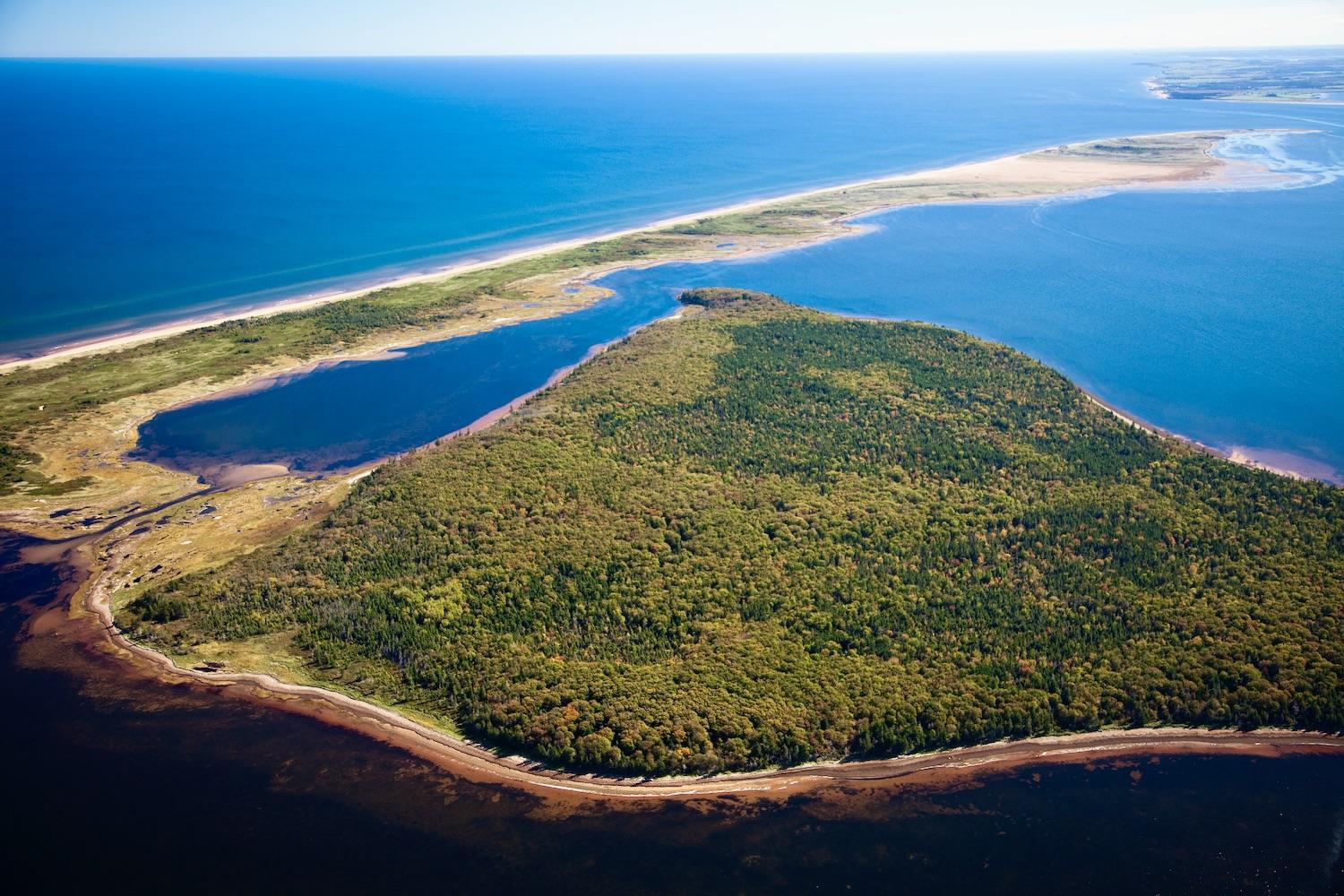
An aerial view of what will be Pituamkek National Park Reserve in Prince Edward Island/Parks Canada
Prince Edward Island is getting a new national park reserve thanks to an agreement signed this week. The creation of Pituamkek National Park Reserve will be the first national park reserve to contribute to Canada’s commitment to create 10 new national parks by 2026.
Comprised of a chain of barrier islands in northwestern PEI, the lands of Pituamkek (bee-DOO-um-gek) form one of the most ecologically significant coastal dune ecosystems in eastern Canada and hold great cultural and historical significance for the Epekwitnewaq Mi’kmaq, the Mi’kmaq of Epekwitk and island residents.
The archipelago also helps mitigate the impacts of extreme weather events on coastal communities, as seen during Hurricane Fiona in September 2022. The Traveler got a private preview of the island near the Lennox Island First Nation in northwestern PEI in June 2022. This will be Canada's 48th national park.
The establishment agreement was announced Thursday by Mi’kmawey Kapmnt Ta’n Nikana’tu’tij Epekwitnewaq Mi’kmaw-Saqmaq — the Mi’kmaw Nation Government of Prince Edward Island (as represented by the Prince Edward Island Chiefs), Chief Darlene Bernard of Lennox Island First Nation, Chief Junior Gould of Abegweit First Nation, and Steven Guilbeault, Minister of Environment and Climate Change and Minister responsible for Parks Canada.
Pituamkek — “At the Long Sand Dune” — is home to ancient and continuing Mi’kmaw land-use traditions, important cultural and archaeological sites, rare and sensitive ecosystems, and unique geological formations. It boasts coastal dune systems, old-growth forests and PEI’s only igneous rock incursion.

A 2022 file photo from the Traveler's visit to what will soon become Pituamkek National Park Reserve/Jennifer Bain
The agreement lays out key elements of the future park reserve, such as a co-management governance model, guardian programming, community-based employment opportunities, and commitments for net-zero, climate smart infrastructure development. It builds on Canada’s commitment to reconciliation with Indigenous peoples and a renewed government-to-government relationship with the Epekwitnewaq Mi’kmaq.
The work on assembling the park reserve lands is an ongoing partnership between L‘nuey, Parks Canada, Island Nature Trust, the Nature Conservancy of Canada and the Province of Prince Edward Island. The Mi’kmaq Epekwitnewaq Kapmntemuow has led the way in initiating and continuously advocating for the establishment of this park reserve since the beginning of this process in 2006.
Parks Canada explains that a national park reserve is an area that is managed like a national park but is subject to one or more Indigenous land claims. These land claims are being negotiated between the federal and Indigenous governments. Indigenous peoples continue to use the land for traditional hunting, fishing and trapping.
Parks Canada says that in the early years of Pituamkek, the public visitor experience offer "will be quite modest and focused on learning about the area and its history remotely." For 2024, there will be a limited staffing presence at Pituamkek while work focuses on the Pituamkek Conservation Program.
The next steps for Pituamkek include the implementation of the Toqi-Alsutekekl (a co-management body, set out in the agreement), the creation of a more detailed conservation and visitor experience vision for the area, and the development of a detailed management plan. During the next phase of the establishment process, the development of Pituamkek’s first management plan will be an early priority, along with the creation of the park’s co-management board, Toqi-Alsutekekl. The plan will outline a multi-year model for park operations, including details on visitor experience and public visitation, staffing and infrastructure models, restoration and conservation work, and any archaeological and research work. The subsequent building of the operations team and any necessary development are longer-term undertakings which will happen in a phased approach over a period of years.
The park’s first management plan will be the subject of extensive research, planning, and public engagement and consultation with Epekwitnewaq Mi’kmaq, and will take time to develop. In turn, it will help inform the long-term conservation and visitor experience vision for the protected area before any development takes place.

 Support Essential Coverage of Essential Places
Support Essential Coverage of Essential Places






